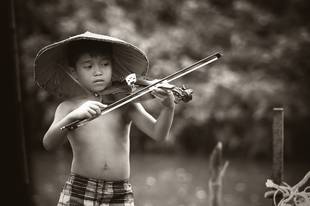
Social Consequences of Membership in Racial and Ethnic Groups
In many societies throughout the world, membership in racial and ethnic groups influences people’s social status and roles as they interact with others. Physical characteristics, especially skin color and certain distinctive cultural traits, complexes, and patterns, become badges for social and economic status. Frequently, they establish a person’s or a group’s position in the social stratification system and differential treatment. Furthermore, when an ethnic group becomes a target of discrimination, such group may utilize the unique physical or cultural traits as the rallying force for promoting common loyalties and enhancing collective action (Panopio, p.401).
When people’s definition of physical characteristics greatly affects their relationship, such definitions generally become interlinked with cultural differences. A classic example is the white man’s justification of his technological, economic, political and military superiority. Examples are such ideologies as the God-chosen race, the white man’s burden, and more recently, the apartheid policy. These doctrines of racial superiority and racial inferiority gave rise to the use of very inaccurate stereotypes in judging and relating with others, in the limitation of national quotas in mass immigrations, in individual and institutional discrimination and persecution, in race riots, treatments may take the form of peonage, military subjugation, and economic, political, educational, and social suppression (Panopio). Racial and ethnic membership leads to a sense of “people-hood” (Gordon, 1978). By this we mean a sense of identification with a relatively small segment of the world’s population – those who by virtue of common ancestry or heritage we consider “our own kind.”
Notions of race and ethnicity provide a consciousness of oneness, an in-group feeling that “I am one of these” and “not one of those”. This compelling sense of racial and ethnic identity satisfies an important psychological need. As Erich Fromm wrote in 1941:
“The identity with nature, clan, religion, gives the individual security. He belongs to, he is rooted in, a structuralized whole in which he has an unquestionable place. He may suffer from hunger or suppression, but he does not suffer from the worst of all pains – complete aloneness and doubt.”
Racial and ethnic bonds foster social solidarity with others perceived as similar to one self and achieving economic and political goals. For instance, the belief in a superior “white” race that accompanied colonial expansion did much to fuel and justify economic exploitation. Similarly, shared racial consciousness among 20th century Africans did much to unite previously warring tribes in the struggle for independence.
Patterns of Ethnic Group Relations
Whenever and wherever different people come to live together, status of dominance or subordination is created. People who occupy a subordinate status are usually called a minority group. What determines a minority group is not the unique racial or ethnic traits nor their great number but the relationship of different groups in the society of which they are a part. For often, the so-called minority group actually out – numbers the majority. In South Africa, for example, non-whites constitute 80% of the majority. A minority group, then, is one that, because of the power of differences among the groups, is singled out for unequal treatment in the society. A minority refers to a group which, because of physical or cultural characteristics, occupies a subordinate position in the society and subjected to collective discrimination, in some cases, even segregation, oppression, slavery, peonage, military subjugation, religious persecution, and economic, political, educational, and social suppression.
The patterns of ethnic group relations include the following:
1. Patterns of Racism
Racism refers to the belief that some human races are inherently inferior.
a. Prejudice and discrimination have taken in a strongly negative cast. Prejudice is an emotional prejudgment or attitude towards a person or group of people. It refers to a categorical like or dislike of a group of people based on real or imagined social characteristics, usually associated with their race, religion, ethnic group, sexual orientation, or perhaps occupation. (Keller, 1987).
In his study, (1974), Bulatao listed impressions on some ethnic groups by respondents from five Philippine cities: Ilocanos and Chinese were viewed as most industrious, serious, thrifty; Tagalogs, progressive; Bicolanos and Cebuanos, humble, friendly, warm, and peaceful; Warays, lazy but strong; and Ilongos, proud and extravagant.
b. Discrimination refers to the act of disqualifying or mistreating people on the basis of their group membership or on ascriptive grounds rationally irrelevant to the situation. Whereas prejudice is a state of mind, discrimination is actual behaviour. Prejudice and discrimination work hand in hand to create and sustain racial and ethnic stratification. (Jarry J. 1987).


















